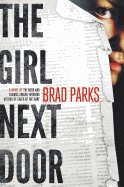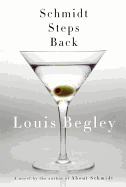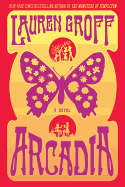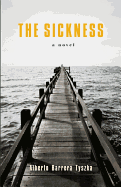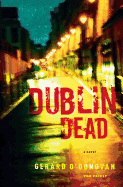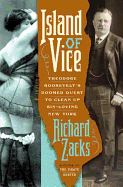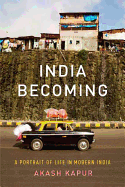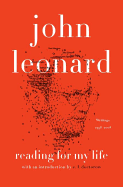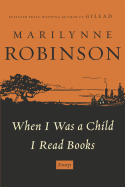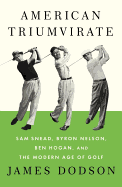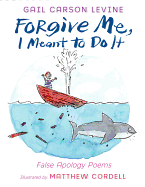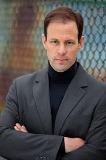 Do you ever get tired of the Thriller Guy?
Do you ever get tired of the Thriller Guy?
You know the one. Square jaw. Steely eyes. Can shoulder a Smurf & Winsome Semi-Automatic 15XZ Hippoblaster (err, y'know, whatever) and make a kill shot from 1,500 meters.
Or how about the Broken Guy?
You know him, too. Busted marriage. Ruined life. Drinks double-shots of 180 proof whiskey so he can escape the weight of the heinous crime his father committed three decades ago.
As a lifelong crime fiction fan, I certainly knew these guys.
But I never felt like I had bumped into one at the grocery store. So when I got inspired to write a novel--loosely based on a quadruple homicide I had covered as a newspaper reporter in Newark, N.J.--I wanted to make my protagonist a character the rest of us could relate to.
Enter Carter Ross, a white boy from the suburbs with a happy childhood, a boring haircut and a bare minimum of emotional baggage. His favorite color is khaki. His favorite flavor--not to mention his lifestyle --is vanilla.
I've still taken this Everyman and thrown him into some sticky wickets. Newark is, after all, a city where crime has been known to occur and New Jersey is a state that has, once or twice, been visited by organized crime and corruption.
But through three books--with more on the way--Carter has faced those things with a good sense of humor and a skill set that’s a little more familiar most folks. No exotic martial arts. No fancy weaponry. Just a notepad, a ballpoint pen and enough sense to realize he was going to have to use brains rather than brawn to survive.
After all, he's got to hit the grocery store on his way home. --Brad Parks, whose latest Carter Ross thriller is The Girl Next Door (Minotaur).
See our review below.
Schmidt Steps Back
by Louis Begley
Twelve years after Schmidt Delivered Louis Begley returns to his most famous literary creation, Albert Schmidt.
Framed by scenes set at the cusp of 2009, Schmidt Steps Back quickly shifts to 1995, when "Schmidtie," as he's known to his friends, becomes infatuated with Alice Verplanck, a Frenchwoman 15 years his junior and the widow of his protégé and former law partner. Begley meticulously chronicles Schmidt's enthusiastic, if often fumbling, efforts to win over the younger woman while simultaneously exploring his relationships with his former lover Carrie, a Puerto Rican waitress younger than his daughter, and Charlotte, the brittle and emotionally distant daughter herself.
In the years since the death of his wife and his retirement from Wall Street, Schmidt has come to head the foundation established by his friend, Egyptian-American businessman Mike Mansour, a job that offers him ample European travel and a first-class lifestyle. His sexual enthusiasm can only be described as enviable for a man who's eligible for Medicare.
Begley himself spent a long career as a corporate lawyer in a prestigious New York firm not unlike Schmidt's, and didn't produce his first novel, Wartime Lies, until he was 58. In Schmidt Steps Back, he excels in his deft manipulation of our feelings about his protagonist. One moment, Schmidt is a chilly, vaguely anti-Semitic WASP gliding through life as a smug member of the One Percent; suddenly, when he's struggling to reconnect with his estranged daughter or desperately pursuing Alice, he becomes a figure of true pathos. In this and his other literary incarnations, he's a character undeniably worthy of our attention. --Harvey Freedenberg, attorney and freelance reviewer
Discover: Albert Schmidt struggles with life and love as Louis Begley returns to his most famous character.
Arcadia
by Lauren Groff
Ridley Stone, better known as "Little Bit of a Hippie," or just "Bit," grows up in a commune in the western New York town that gives Lauren Groff's second novel, Arcadia, its title. Born in the late 1960s to parents who have already joined Arcadia House--a community dedicated to veganism, communal property and general freedom--Bit spends his entire young life within its confines. Its struggles and joys are his, its denizens his family: his parents, Hannah and Abe; his friends Cole and Dyllie; Verda, the hermit who lives alone in the Arcadia woods; and Helle, Bit's first love, who haunts the novel as well as Bit's heart.
After an Arcadian party gets out of hand and ends in tragedy, the community breaks up. Bit, like many others, winds up in New York City. He becomes a photographer, an observer hiding behind the lens of his camera, living his life on the fringes of a busy world--mostly in pursuit of Helle. But, as Helle disappears and the world begins to fall apart, Bit finds himself drawn back to Arcadia, caring for his father, then his mother and then, ultimately, himself.
Arcadia is a powerful tale, with a narrative structure that echoes Cormac McCarthy's The Road. Its subject matter is less overwhelmingly dark, though. As Bit struggles with forces and feelings he does not understand and cannot control, hope lights Arcadia's pages, quiet but undeniably present. --Dani Alexis Ryskamp, blogger at The Literary Cricket
Discover: A stunning coming-of-age tale about a young man's pursuit of the common home that matters most.
The Sickness
by Alberto Barrera Tyszka, transl. by Margaret Jull Costa
How does a good doctor tell his beloved father that he has inoperable cancer? How long can he wait to tell him?
Andres Miranda is a doctor of immunology, the only son of a man who did everything to help him through the trauma of losing his mother in a plane crash when he was a boy. Javier Miranda's multiple lesions are suggestive of a metastatic disease, but he blames his dizzy spells on the summer heat. Though he's 69, he's always enjoyed good health--until now.
Dr. Miranda's anguish at the approaching loss of his father is juxtaposed against a string of supplicating e-mails from a former patient. Ernesto Duran has been assured by the doctor that he is in perfect health, but he keeps experiencing sudden, dizzying drops in blood pressure. Duran's pathological persistence has caused Dr. Miranda to forbid him to enter the hospital, but as his e-mails become increasingly desperate, Dr. Miranda's secretary, Karina, has mercy on him and secretly impersonates the doctor to write a kind reply.
"Why do we find it so hard to accept that life is pure chance?" this short novel asks repeatedly, as its dual narratives--both revolving around lying to give someone false comfort--create a web of needy, passionate people who could be saved by the redemptive power of words... if only they'll talk to each other. Venezuelan poet and novelist Barrera Tyszka's characters are good people, flawed and conflicted, lying and facing their fears, trying to do the right thing. --Nick DiMartino, Nick's Picks, University Book Store, Seattle
Discover: A good doctor struggles to tell his beloved father that he has terminal cancer in a novel that won the Premio Herralde award for Spanish-language literature.
Mystery & Thriller
The Girl Next Door
by Brad Parks
In a business where what bleeds leads, reporter Carter Ross finds uplift in the memorial section--until one day he stumbles upon murder. When an Eagle-Examiner newspaper delivery woman meets an early death in a hit-and-run accident on her route one morning, Carter wants nothing more than to honor her memory as a likable, hardworking girl next door. But beneath the surface of Nancy Marino's seemingly simple life, he uncovers a mare's nest of family tensions, sexual harassment and hardball union politics--with all the evidence pointing toward his boss.
The Girl Next Door is the third installment of Brad Parks's Carter Ross series, which began with the Nero- and Shamus-winning Faces of the Gone. The popularity of the series is in no small part thanks to its self-effacing hero, Carter, a self-described prep school WASP. But he's got guts, and under the oxford/khakis combo, he's 100% Jersey.
With its Newark backdrop and broad humor, many reviewers have compared Parks's work to the Stephanie Plum bestsellers. Like Janet Evanovich, Parks captures the New Jersey sense of place in careworn but cozy blue-collar neighborhoods with postage-stamp yards serenaded by the "white noise machine" of the parkway. Carter and Stephanie share the common traits of courage verging on foolhardiness, language bordering on foul and, of course, a morbid appreciation for all thing funereal.
Through his portrayal of newsroom culture and the ailing (if once-mighty) independent paper, Parks ascends the more pulpy shallows of the genre. The Girl Next Door is perfect for the reader who loves an LOL moment but wants a mystery that's more than empty calories. --Tom Lavoie, former publisher
Discover: The third mystery from former newspaperman Brad Parks demonstrates how taking headlines from headstones makes more enemies than friends.
Dublin Dead
by Gerard O'Donovan
Gerard O'Donovan's Dublin Dead is an up-to-date, fast-paced, intriguing look at the drug war in Europe and the state of modern Ireland. Detective Inspector Mike Mulcahy leads a task force that coordinates international intelligence for Ireland's National Drug Unit. He and his partner, Liam Ford, have been investigating the abandonment of a ship on the Cork coast--a ship holding a staggering 100 million euros' worth of cocaine.
But Mulcahy still has nightmares about his confrontation with a serial killer in O'Donovan's debut novel, The Priest. Reporter Siobhan Fallon has nightmares of her own, because the Priest actually crucified her. After a year of counseling and physical therapy, Siobhan is ready to work again, so her boss sends her to Cork to cover the funeral of wunderkind estate agent Cormac Hogan, who lost a bundle when the housing bubble burst. Siobhan soon finds out that Hogan's girlfriend mysteriously disappeared the day after he died and begins to suspect that the apparent suicide may not be what it seems.
Meanwhile, Mulcahy and Ford discover that a former Irish drug lord, Declan Begley, has been murdered in Spain. Spanish cops have requested assistance, so Mulcahy and Ford start looking into some of Begley's cronies in Ireland. They soon find surprising links to both the ship full of cocaine and Siobhan's investigation into Hogan's death. As the mystery unfolds, Mulcahy and Siobhan struggle to figure out the ramifications (both personal and career) of their collaboration, and come to terms with their memories. --Jessica Howard, blogger at Quirky Bookworm
Discover: A reporter and a cop make an unlikely team as they investigate drug smuggling and murder in Ireland.
History
Island of Vice: Theodore Roosevelt's Doomed Quest to Clean Up Sin-Loving New York
by Richard Zacks
There is no shortage of reading material on Theodore Roosevelt, but the majority of it glosses over his short but trying time as Police Commissioner in New York City. Historians who do address this difficult time tend to draw primarily on Roosevelt's own memoirs of the period, in which he portrays himself successfully cleaning up the city. In fact, as Richard Zacks (The Pirate Hunter) reveals in Island of Vice, Roosevelt's two-year term as police commissioner was a failure. Zacks's coverage of this little-studied period of Roosevelt's career is lengthy but captivating, revealing the underbelly of 1890s Manhattan--the alcohol, the prostitution and the gambling--along with the systemic police corruption that allowed it all to flourish.
Roosevelt's prudish, almost Puritanical efforts created an atmosphere that Zacks depicts as a vicious game of whack-a-mole; for every instance of vice suppressed, three new ones seem to have appeared. The end result of Roosevelt's "doomed quest" was a Manhattan as steeped in sin as it was before his time there, and a deep rift between him and Republican leadership. In a bizarre twist of events, it was this intolerance that pushed Roosevelt into the vice presidency, a position Zacks notes was meant to keep him out of trouble more than give him power. And the rest, as they say, is history. --Kerry McHugh, blogger at Entomology of a Bookworm
Discover: A little-known period of Theodore Roosevelt's career and the city that refused to bend to his will.
Current Events & Issues
India Becoming: A Portrait of Life in Modern India
by Akash Kapur
India is a country of deep contradictions, where shiny Westernized optimism and sleek technology office parks stand in sharp contrast to the traditional values and structures of its villages. When Akash Kapur moves back to his homeland after more than a decade in the U.S., he is both exhilarated and disgusted by the incongruities he sees everywhere.
As Kapur interviews young technology workers, village elders and women struggling to balance work and family life, he puzzles over the contrasts of the new India and the old. India has enjoyed rapid economic growth in recent years, but behind the glossy veneer of shopping malls and a booming technology sector is a tangle of political unrest, reeking slums and a shrinking agricultural industry.
Reported with a keen journalistic eye, India Becoming is a nuanced, if ambivalent, portrait of a country caught in transition. As Kapur tries to reconcile the different portraits of the new India that emerge from his interivews, he and his wife debate their decision to move back: they want to participate in the country's progress, but are unnerved by the air pollution, gang crime and poverty lurking around so many corners.
The conclusion that India is changing rapidly--and not always for the better--is somewhat inevitable. But the insider-outsider perspective Kapur brings to his observations forms the basis of a fascinating glimpse into a complex country, tied to its roots even as it transforms itself into something utterly new. --Katie Noah Gibson, blogger at Cakes, Tea and Dreams
Discover: A nation caught in the transition between ancient traditions and modern economic prosperity.
Essays & Criticism
Reading for My Life: Writings, 1958-2008
by John Leonard
Reading for My Life is an exhilarating selection of 50 John Leonard reviews, essays and speeches. His erudition on a dizzying array of subjects is never offered for its own sake. Instead, it fuels the infectious enthusiasm of Leonard's standing invitation to join him on a roller-coaster ride in the amusement park of contemporary culture.
The book contains a healthy sampling from nearly all of the many publications that featured Leonard's work (of how many writers can it be said they wrote happily for National Review and the Nation?). There are brief reviews of novels from authors like Don DeLillo and Doris Lessing, and extended appraisals of the works of Günter Grass, Thomas Pynchon, Norman Mailer and others, alongside reviews of nonfiction that include memoirs as diverse as Richard Nixon's Six Crises and Joan Didion's The Year of Magical Thinking. Throughout, the vitality of Leonard's prose helps his incisive criticism withstand the passage of time.
Leonard didn't confine himself to cultural criticism--literary or otherwise. In his politics, he was a liberal, as demonstrated by his informed, passionate essays on why socialism never came to the U.S. and America's response to the 9/11 attacks, among others.
Reading for My Life concludes with a series of warmhearted tributes from family and friends like Toni Morrison and Victor Navasky, all paying homage to a man who married a keen intelligence to a generous spirit. "The books we love, love us back," John Leonard once wrote. There is wisdom, wit, and yes, ample helpings of love in the words gathered here--a celebratory summing up of an incomparable critic's life's work. --Harvey Freedenberg
Discover: A career-spanning collection of an eminent critic's takes on literature, culture and politics.
When I Was a Child I Read Books: Essays
by Marilynne Robinson
In the title essay of this book, her fourth collection of essays, Robinson (best known for her fiction, including the Pulitzer Prize-winning Gilead) uses her own experience as a child reader to parallel our one-time lust for exploration and adventure in the American West. She goes on to reckon with the loss of individualism--or perhaps the loss of the celebration of individualism--and our seeming complacency with the status quo. "Everything, for all purposes, still remains to be done," she presses. We need, in short, a modern version of the American West to spur our imaginations, to motivate us to once again embrace the spirit of the individual.
Other essays range from the role of science in explaining our origins to the practical worship of capitalism in the 21st century, from our treatment of the poor to the intertwined nature of religious identity and American patriotism. Throughout, Robinson approaches these topics through the lens of her own faith and beliefs, but the lessons ultimately transcend any one religion and instead encompass our very definition of our selves, as individuals, as Americans, as readers, as members of a faith--or not, as the case may be.
It is this transcendence that makes When I Was a Child I Read Books as relevant for non-religious readers as for the observant. As individual pieces, these essays inspire a new consideration of particular issues; as a whole, they force readers to reconsider who they are--and, perhaps more importantly, why they are. --Kerry McHugh, blogger at Entomology of a Bookworm
Discover: Pulitzer-winning author Marilynne Robinson tackles questions of faith, patriotism and self-identity in a stunning collection of essays.
Sports
American Triumvirate: Sam Snead, Byron Nelson, Ben Hogan, and the Modern Age of Golf
by James Dodson
It's always a pleasure to welcome a new book from James Dodson. He is without doubt one of the best golf writers we have; Final Rounds and Ben Hogan: An American Life have secured him that status. But in American Triumvirate, Dodson has almost outdone himself.
1912: Fenway Park opens, Titanic sinks and three of the greatest golfers of all time are born: Byron Nelson, the oldest, in February, followed by Sam Snead in May, and the youngster, Ben Hogan, in August. (Later, Nelson and Hogan would grow up together as young caddies in Texas.) Dodson's intertwined biographical history is an outstanding celebration and examination of this trio's careers that provides an insider's view of how their play and personalities not only saved the pro golf tour but increased its popularity, as well as grew the game itself--inspiring many people to take up golf for the first time.
Filled to the brim with biographical tidbits, insightful golf history and loving portraits of these three golfing musketeers in the early years of professional golf history, Dodson's book captures it all in a readable and exciting narrative. He seems to have interviewed everyone who knew them, and the stories and anecdotes make us feel like we're right there watching their near perfect golf swings over and over again. --Tom Lavoie, former publisher
Discover: A fascinating history of golf from the 1930s to the 1950s celebrates three of its greatest players.
Children's & Young Adult
Forgive Me, I Meant to Do It: False Apology Poems
by Gail Carson Levine, illus. by Matthew Cordell
Newbery Honor author Gail Carson Levine (Ella Enchanted) puts a devilishly comical twist on a famous verse by William Carlos Williams with this collection of 46 poems.
She models each "false apology" poem on the form Williams created, which appears on page 21 ("This is just to say/ I have eaten/ the plums/ that were in/ the icebox..."), after her introduction to the collection on page 18 ("where/ my editor excruciatingly loudly/ screeched/ it does not belong")--itself fashioned after his poem. As she did with her book Writing Magic, Levine offers perceptive observations on the craft, analyzing Williams's form and delivering her points in a fittingly sardonic tone: "You can abandon the form completely and write false apology poems in your own cruel way," she advises.
She models a way for children to explore the topics at their fingertips. Her poems' subjects range from Barbie dolls to a lucky baseball cap, as well as classic nursery rhymes and songs, such as a brilliant riff on "Row Row Row Your Boat" and the "Itsy Bitsy Spider." And of course fairy tales, which Levine has retold so masterfully--her past heroines Cinderella, Snow White and the Princess (of "Pea" fame) all make appearances here. The witch from Hansel and Gretel and the cow from Jack and the Beanstalk deliver particularly delectable confessions. If a few fall short of that high standard, readers will forgive her. Overall, Levine creates an anthology that will keep children laughing, and serves as an irresistible invitation to try some stanzas of their own. --Jennifer M. Brown, children's editor, Shelf Awareness
Discover: A Newbery Honor author's invitation to laugh out loud and create your own poems modeled on a favorite poet's "false apology."
Curveball: The Year I Lost My Grip
by Jordan Sonnenblick
It is a snapshot of Peter Friedman's life as he starts high school after a dream-shattering sports injury takes him from atop the pitcher's mound and positions him behind the camera's lens. As Pete adjusts to life on the sidelines as a sports photographer--his palm-stinging pitch now "plopped into the grass like a fat little dead pigeon"--he also watches in dismay as his grandfather begins to lose his grip on reality. How could the man who taught him everything he knew about photography suddenly need a Post-it in the kitchen with instructions for making toast?
Curveball is not a superficial romp through adolescence, though Pete does find himself "in testosterone" with a girl in his photography class, and newly aware of how tight girls' sports uniforms are. It has depth and substance, which Sonnenblick carefully balances with humor to create a well-crafted narrative that will appeal to fans of John Green and Nick Hornby. Resembling a marginally cooler Sam, of Freaks and Geeks fame, Pete is a character to whom readers can easily relate. His attempts to come to terms with his injury, cope with his grandfather's illness, and to simply not look like an idiot freshman will engage readers within the first few pages and will not let them go until the last. --Julia Smith, blogger and children's bookseller emerita
Discover: Peter Friedman, whose sports injury ruins his high school dreams, but starts him on another path.


